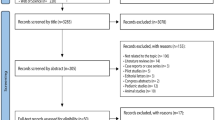Abstract
AIM: To study the saliva profiles in children with severe heart disease taking heart failure medication compared with the saliva from healthy age and gender matched controls. STUDY DESIGN: Cross sectional case-control design. METHODS: Twenty-four age and gender matched pairs of children, mean age 12.0 years participated. Stimulated saliva was collected in a standardized way before lunchtime and the subjects were asked to refrain from all eating, drinking and tooth brushing 90 mins before sampling. Stimulated salivary secretion rate, buffering capacity, total salivary viable count of bacteria, mutans streptococci and lactobacilli, calcium, chloride, magnesium, potassium, sodium and salivary IgA were determined. RESULTS: There were 7 of the 24 children in the cardiac group who had secretions below 0.5 ml/min compared with no child in the control group (p<0.01). Lower than 106 total viable counts of bacteria (TVC) were detected in the cardiac group 1.4×106 ± 1.2×107 vs. 2.7×106 ± 2.9×107 in the control group (p<0.05). Mutans streptococci (MS) in the cardiac group were 5.2×104 ± 1.5×105 vs. 8.1 ×103 ± 1.3×104 in the control group, (p>0.05) and MS ratio of TVC constituted 0.11±0.35 per cent compared to 0.01±0.02 per cent for the control group (p>0.05). STATISTICS: Continuous data were analysed by an analysis of variance (ANOVA) and categorical data by chi-square test. CONCLUSION: Reduced salivary secretion could be a caries risk factor in children taking heart failure medication.
Similar content being viewed by others
References
Bhat AH, Sahn, DJ. Congenital heart disease never goes away, even when it has been ‘treated’: the adult with congenital heart disease. Curr Opin Pediatr2004;16:500–507.
Bradshaw DJ, Marsh, PD. Analysis of pH-driven disruption of oral microbial communities in vitro. Caries Res 1998;32:456–462
da Fonseca M, Teske, EMD, Thikkurissy, S, Amini, H. The impact of oral health on the quality of life of young patients with congenital cardiac disease. Cardiol Young 2009;19:252–256
Dasanayake AP, Roseman, JM, Caufield, PW, Butts, JT. Distribution and determinants of mutans streptococci among African-American children and association with selected variables. Pediatr Dent 1995;17:192–198
Edgar WM. Saliva and dental health. Clinical implications of saliva: report of a consensus meeting. Brit Dent J 1990;169:96–98
Franco E, Roberts, RG. Dental disease, caries related microflora and salivary Ig A of children with severe congenital cardiac disease: an epidemiological and oral microbial survey. Pediatr Dent 1996;18:228–235
Grahn K, Wikstrom, S, Nyman, L, Rydberg, A, Stecksen-Blicks, C. Attitudes about dental care among parents whose children suffer from severe congenital heart disease: a case-control study. Int J Paediatr Dent 2006;16:231–238
Hayes PA, Fasules, J. Dental screening of paediatric cardiac surgical patients. J Dent Child 2001;68:255–258
Herrera JL, Lyons, MF, Johnson, LF. Saliva: its role in health and disease. J Clin Gastroenterol 1988;10:569–578
Koch G, Poulsen S, Twetman S. Caries prevention. In: Koch G, Poulsen S, (eds) Paediatric dentistry-a clinical approach. 2.ed. Copenhagen: Wiley-Blackwell, 2009; p. 107.
Marsh PD. Dental plaque as a biofilm and a microbial community-implications for health and disease. BMC Oral Health 2006;15:6
Nederfors T, Dahlöf, C. Effects on salivary flow rate and composition of withdrawal of and reexposure to the 1-selective antagonist metoprolol in a hypertensive patient population. Eur J□Oral Sci 1996;104:262–268
Nederfors T, Dahlöf, C, Ericsson, T, Twetman, S. Effects of the antihypertensive drug captopril on human salivary secretion rate and composition. Eur J Oral Sci 1995;103:351–354
Nederfors T, Dahlöf, C, Twetman, S. Effects of the beta-adrenoceptor antagonists atenolol and propranolol on human unstimulated whole saliva flow rate and protein composition. Scand J Dent Res 1994;102:235–237
Nederfors T, Twetman, S, Dahlöf, C. Effects of the thiazide diuretic bendro-flumethiazide on salivary flow rate and composition. Scand J Dent Res 1989;97:520–527
Reybrouck T, Vangesselen, S, Gewillig, M. Impaired chronotropic response to exercise in children with repaired cyanotic congenital heart disease. Acta Cardiol 2009;64:723–7.
Richardson P, McKenna, W, Bristow, et al. Report of the 1995 WHO/International Society & Federation of Cardiology Task Force. Definition and Classification of Cardiomyopathies. Circulation 1996;93:841–842
Rosén L, Stecksén-Blicks, C. Experience of dental care for children with CHD among Swedish dentists. Swed Dent J 2007;31:85–90
Scully C, Felix, D. Oral Medicine — update for the dental practioner: dry mouth and disorders of salivation. Br Dent J 2005;199:423–427
Selwitz RH, Ismael, AI, Pitts, NP. Dental Caries. Lancet 2007;369:51–59
Sreebny L, Schwartz, S. A reference guide to drugs and dry mouth. Gerodon-tology 1986;5:75–99
Stecksén-Blicks C, Rydberg, A, Nyman, L, Asplund, S, Svanberg, C. Dental caries experience in children with congenital heart disease: a case-control study. Int J Paediatr Dent 2004;14:94–100
Streckfus C. Salivary function and hypertension: a review of the litterature and a case report. J Am Dent Assoc 1995;126:1012–1017
Torres MC, Ramos, ME, Coelho, TL, Harari, S. Salivary Streptococcus mutans and Lactobacillus sp levels in cardiac children. J Clin Pediatr Dent 2001;26:103–109
Author information
Authors and Affiliations
Corresponding author
Rights and permissions
About this article
Cite this article
Rosén, L., Rydberg, A., Sjöström, I. et al. Saliva profiles in children using heart failure medication: a pilot study. Eur Arch Paediatr Dent 11, 187–191 (2010). https://doi.org/10.1007/BF03262742
Published:
Issue Date:
DOI: https://doi.org/10.1007/BF03262742




